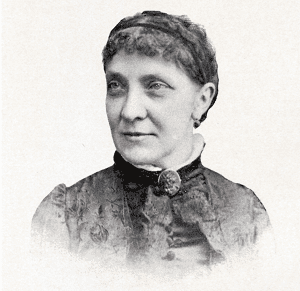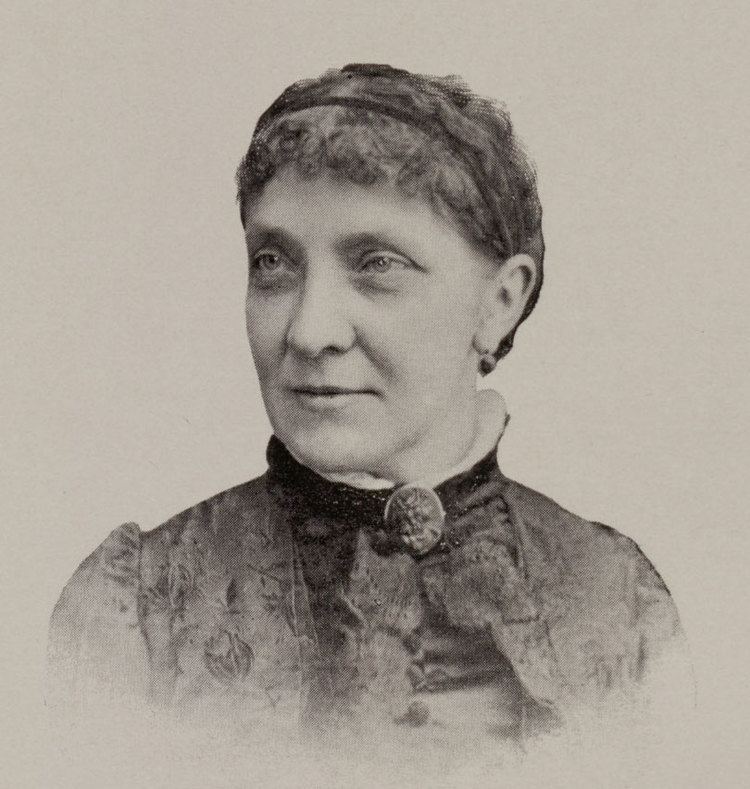Name Rachel Lloyd Doctoral advisor V. Merz Role Chemist | Notable students Samuel Avery | |
 | ||
Born Rachel Abbie HollowayJanuary 26, 1839Flushing, Ohio ( 1839-01-26 ) Known for Sugar Beet Chemistry & AgricultureFirst American female Ph.D in Chemistry Institution University of Nebraska–Lincoln | ||
Institutions University of Nebraska Other academic advisors Charles F. Mabery | ||
Human trafficking rachel lloyd at tedxuchicago 2012
Rachel Lloyd (January 26, 1839 – March 7, 1900) was an American chemist best known for her work on the chemistry and agriculture of sugar beets (Beta vulgaris). She studied at the Harvard Summer School before receiving her doctorate from the University of Zurich in 1886, becoming the first American female to earn a doctorate of chemistry. In 1891, she became the first regularly admitted female member of the American Chemical Society. More than a century later, the Society designated her research and professional contributions to chemistry a National Historic Chemical Landmark on October 1, 2014, at the University of Nebraska--Lincoln.
Contents
- Human trafficking rachel lloyd at tedxuchicago 2012
- Early years
- Studies
- University of Nebraska
- References

Early years
Lloyd (née Rachel Abbie Holloway) was born in Flushing, Ohio to a large Quaker farming family, which she lost at a young age; all three of her siblings died in infancy, her mother when she was five, and her father when she was 12. At the age of 20, she married Franklin Lloyd, a chemist with Powers and Weightman. The couple had two children: Fannie Lloyd, (1860–1860), and William C. Lloyd (1865–1865), both of whom died in infancy. Franklin also died in 1865, shortly after William's death. Lloyd supported herself for some time as a science teacher at the Chestnut Street Female Seminary before making the decision to formally pursue her interest in chemistry.
Studies
In the summer of 1876, Lloyd began attending courses in botany and chemistry at the Harvard Summer School, where she did research with Charles F. Mabery. She attended Harvard Summer School and continued her research for the next eight years, coauthoring three published papers. meeting Rachel Bodley, her future colleague in the American Chemical Society, and, in 1880, Hudson Henry Nicholson, her future colleague at the University of Nebraska. During this time, Lloyd continued to teach. In 1883, she helped found the Louisville School of Pharmacy for Women in Kentucky, along with Joseph P. Barnum.
In 1884, Lloyd decided to study at the University of Zurich, which at the time was the only institution where women were permitted to attempt a doctorate in chemistry. Lloyd was awarded her doctorate in 1886, at the age of 48, having completed her dissertation on the conversion of phenols to aromatic amines under Professor Viktor Merz. During this time, she also became interested in the emerging sugar beet industry.
University of Nebraska
In 1887, the University of Nebraska offered Lloyd an appointment as associate professor of analytical chemistry to join the departmental chair, Hudson Henry Nicholson as second person in the new Chemistry Department. Lloyd encouraged both young men and young women to enroll; during Lloyd's tenure, the Nebraska section of the American Chemical Society had more women participants than any other section. Between 1888 and 1915 10 of the 46 chemistry students were women.
Lloyd's scientific impact was based on her pioneering studies of sugars in sugar beets, using analytical techniques such as the saccharometer. Lloyd's studies made use of test plots of sugar beets in various parts of Nebraska. Her scientific reports on sugar production in sugar beets first appeared in 1890, helping establish the economic viability of sugar beet farming in the latter part of the 19th century, critical to Nebraska farmers. Following the passage of the Hatch Act of 1887, the University of Nebraska was awarded a grant of $15,000 to create the Nebraska Agricultural Experiment Station. Lloyd rose to full professor in 1888 and continued to teach until 1894, when she resigned due to ill health. After her death, Acting Chancellor Charles E. Bessey said in a memorial lecture at the University of Nebraska, ″She was not only an eminent chemist, she was a great teacher, and more than that, she was the beloved advisor and counselor of students.″ She lived in the Philadelphia, Pennsylvania, area for the last seven years of her life, to be closer to friends and relatives.
